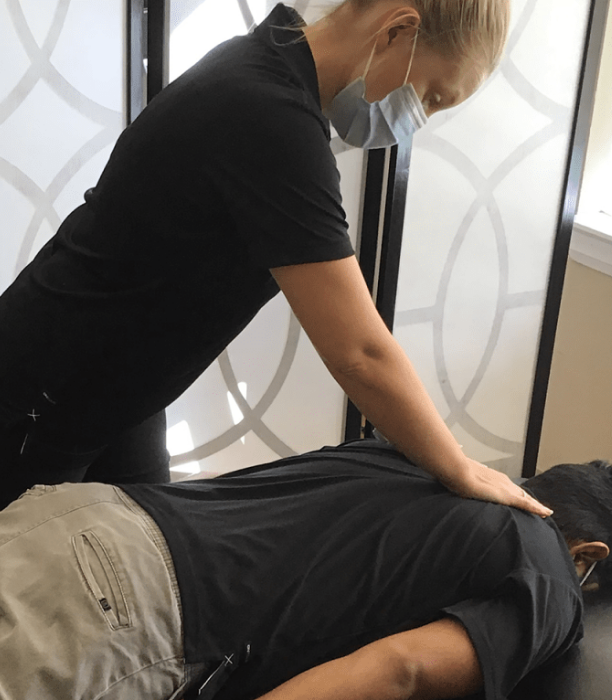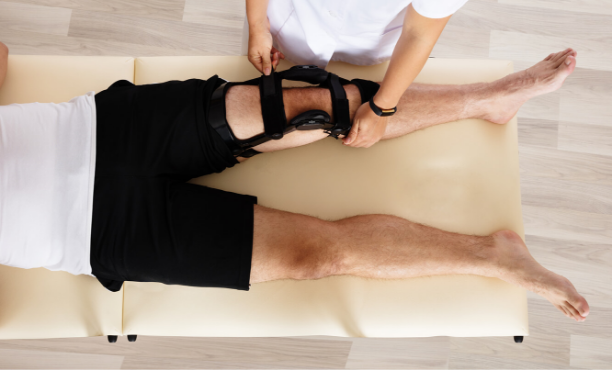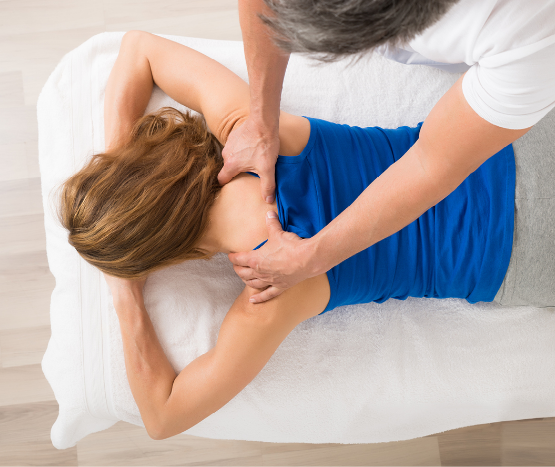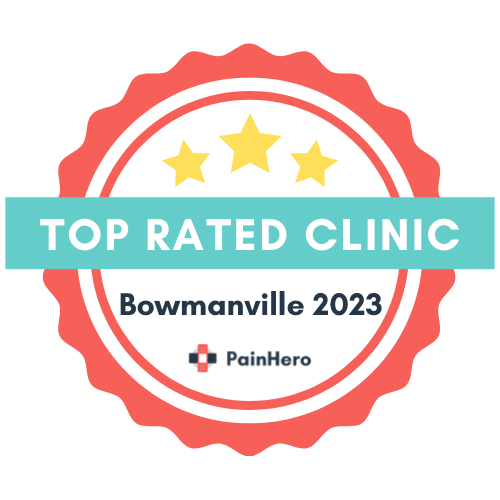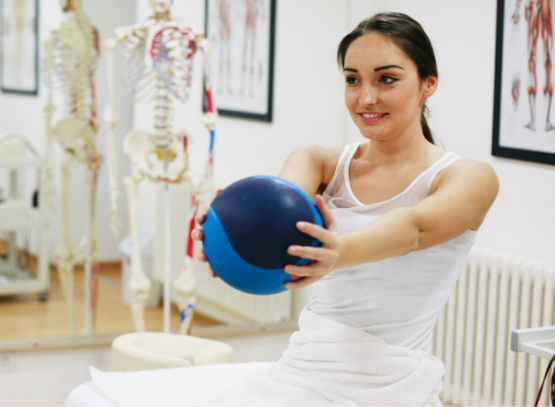- How Can Physiotherapist In Bowmanville Help?
Physical Therapy, often shortened to ‘Physio’, involves restoring function of the body’s physical performance caused by acute trauma or due to chronic illness. A Registered Physical Therapist completes a minimum of six years university training to study the anatomy, physiology and natural healing properties of the human body. They learn how to assess and treat problems with human movement involving the Cardio-Respiratory System, Neurological System and Musculoskeletal System. Using techniques that are supported by research, Physical Therapists help people reduce pain and expedite physical recovery. Some of these techniques include exercise, massage, electrical stimulation, ultrasound, acupuncture, education, joint mobilizations and joint manipulations. To put it plainly, if you are having trouble moving any part of your body, you should see a Registered Physical Therapist.
- What Can I Expect At My First Visit At The Bowmanville Physiotherapy Clinic?At your first visit you will be asked to complete a brief health survey so your therapist can fully understand the big picture surrounding your mobility issue. For regulatory reasons, we require your consent to complete our assessment prior to starting the physical exam.
Your therapist will start by asking you some questions about your health and your mobility issues. Once they have gathered enough information, the physical examination will start. This involves demonstrating your physical abilities for standing, walking, balancing and moving in different directions. This allows the therapist to observe how your body moves in different ways before they begin the hands-on assessment. You may be asked to expose the body part that is affected and your therapist may ask to move your joints and touch your muscles.
Once the therapist has determined the source of your problem, they will begin by educating you about the diagnosis and potential treatment options. Depending on the severity of your movement issue you may be required to begin treatment on the same day as your initial consultation. This will be discussed with you so you are comfortable with any treatment decisions that are made.
Physiotherapy treatment can involve using one or more of the following interventions:
- Manual mobilization of the joints, spine, tendons, muscles and fascia.
- Exercise therapy that targets areas of pain, weakness and tightness.
- Thermo and cryotherapy treatments (use of hot and cold) to help improve circulation, promote healing, and decrease problems with swelling, edema and lymphatic drainage.
- Massage treatments to target specific areas of tightness to aid in healing and muscular performance
- Other forms of treatments and therapies based on your specific needs can include acupuncture, custom orthotics, ultrasound, electrical stimulation, vestibular rehab, pelvic examination among others.
- How Often Will I Need To Attend Physiotherapy Treatments In Bowmanville?During your initial visit, your therapist will educate you regarding the cause of your movement issue and present you with “The Perfect Treatment Plan.” This will vary for each individual, based on the severity of your issue, the length of time it has been a problem and according to what best fits your healthcare needs.
We treat every person the same and present you with the most effective, evidence-based plan to get you feeling better as soon as possible. Some clients will need to attend three to four times per week until pains have subsided and then frequency can be re-evaluated by you and your therapist. Others may benefit more from other services such as chiropractic care or massage therapy. For people seeking preventative wellness, they are able to complete a simple home exercise program and see excellent results. Your therapist will explain why each service is recommended and ensure that you get the results you want.
- How Can Physiotherapy And Other Treatments Benefit Me?The benefits of Physiotherapy, Chiropractic Care and Massage Therapy can be broken down into three categories:
- Relief Benefits: For severely painful problems, the first 1-6 visits are often spent reducing pain and inflammation. This is a critical stage of your recovery and requires close supervision by your therapist. In addition to using hands-on and other techniques supported by research, they will teach you home strategies to manage flare ups.
- Corrective Benefits: When pain is less prominent a focus, visits 6-12 teach you how to progressively strengthen your injured body through gentle exercise and use of pacing, while continuing to manage pain flare ups. Clients often think that when pain goes away, the problem is gone, and they fall back into old habits that led to pain in the first place. The corrective phase of a recovery can be anywhere from three to six weeks before a client can move into maintenance or a more dynamic fitness training program.
- Return to Sport/Return to Work/Preventative Benefits: Continue on a regular basis to check in with your healthcare provider to learn more advanced exercises and for services like massage, acupuncture and stretching that prevent chronic movement problems and keep your long term recovery on track. Why wait for that major repair when you can keep your body tuned up all year round?
- What Conditions Can Be Treated By Our Physiotherapists Bowmanville?The professionals at We-Fix-U Bowmanville have helped countless people overcome injury and return to pain-free living. Here is a list of conditions we have helped with in the past:
- Neck pain
- Low back pain/sciatica
- Shoulder pain
- Rotator cuff tears
- Knee pain, acute or chronic
- ACL reconstruction
- Motor Vehicle Accidents
- Whiplash injuries
- Recovery after fall
- Workplace injuries
- Tendinitis
- Sprains
- Plantar Fasciitis/Foot Pain
- Stroke
- Osteoarthritis
- Degenerative or Herniated Discs
- Pelvic Pain
- Urinary Incontinence
- Headaches
- Dizziness
- Vertigo
- Post-Surgical Rehabilitation
- Post-Fracture Rehabilitation
- Will Health Benefit Plans Cover The Cost Of Physiotherapy Treatments in Bowmanville?Yes. In most cases workplace or extended health benefit plans will cover a portion of the cost for Physiotherapy, Chiropractic Care, Registered Massage Therapy and other allied health providers. We-Fix-U Bowmanville offer direct billing for most insurance providers but you may be required to pay a small portion of the cost depending on your coverage. We often remind our clients about how much we are willing to spend on fixing our cars or on recreation when we neglect to invest in our own well-being.
For cases that apply, We-Fix-U also accepts workplace insurance (www.wsib.com) and Motor Vehicle Insurance plans which can help you get access to the professional help you need.
- Can Chiropractic And Registered Massage Treatments Be Used In Conjunction With Physiotherapy?Yes. Doctors of Chiropractic Medicine and Registered Massage Therapists have highly specialized manual skills that many Physiotherapists do not possess. Research has shown time and again that combining treatment techniques often improves results for patients and decreases recovery time. Professional sports teams have all three of these providers on their roster to help their players get back from injury as quickly as possible. Why should you treat yourself any differently?
- Should I Continue With Physiotherapy And Other Treatments Once My Pain Has Gone Away?Yes. When inflammation goes away and you can sleep again, this is a sign your treatment is working. However, after a serious injury, prolonged immobilization or temporary disuse, our bodies are left weaker than they were before. This is not the time to stop Physical Therapy or other treatments.
Returning to sport or work too soon can lead to re-injury and your therapist will help you re-integrate these activities into your daily life under their supervision. Visit frequency will likely decrease but it is important that you continue with home strengthening exercises in between scheduled follow up sessions.
As our clients get farther and farther away from their initial injury, and regain strength, many tell us that they feel better than they did before the injury that led them to us. Many say that they wish they had started Physical Therapy years ago so they had not wasted all those years living in pain.
It is at this stage that your We-Fix-U therapy team will work with you to create an easy-to-follow preventative plan that will keep you miles away from chronic pain for years to come. You only have one body to get you through life, so treat yourself to some tender, loving, care before it becomes a major issue.
Life Is Better, Pain Free!
Are you tired of losing sleep or waking up in pain? Do you suffer from low energy after work, struggle to get dressed or take care of your house due to weakness, or mobility issues? Are you looking to live a more active lifestyle and don’t know where to start?
The Health Professionals at We-Fix-U have been serving our community in Bowmanville for the past 6 years and are committed to helping you live a healthier and happier life. Using state of the art equipment, advanced therapy techniques, client education and hands on treatment, we want to help you discover how good it feels to live pain-free.

